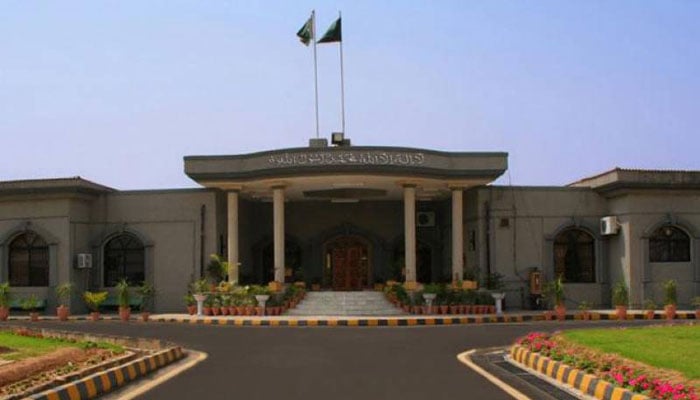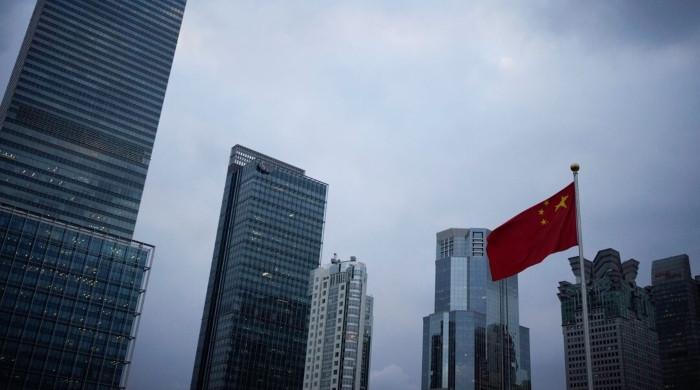Legal eye: Daylight robbery
Justice Athar Minallah of IHC has declared acquisition of F-14 and F-15 sectors by FGEHF for distribution of plots among bureaucrats, judges, journalists and lawyers etc unconstitutional, illegal...
October 28, 2017

Justice Athar Minallah of the Islamabad High Court (IHC) has declared acquisition of the F-14 and F-15 sectors by the Federal Government Employees Housing Foundation (FGEHF) for distribution of plots amongst bureaucrats, judges, journalists and lawyers etc unconstitutional, illegal and void ab initio. He has laid bare the transformation of our power elite into a giant plot mafia unjustly enriching itself at the expense of ordinary citizens, in exercise of state power meant to be used for the benefit of citizens.
This is an extraordinary judgment. Not because the legal propositions are new or unique, but because the court was able to see and apply (without mincing words) settled principles of law, equity and fairness that others haven’t been unable to, either out of sheer ignorance or due to being lured by the private benefit that flows to individuals who control the state and its largess. The judge fell in the category of privileged citizens entitled to partake in the heist. He did not. In this day and age to witness the right thing being done is quite extraordinary.
Let’s restate some basics. We have a written constitution. The state is to be run in accordance with it. In a democracy, citizens elect their government, which exercises delegated powers to be held in trust and used for the benefit of citizens. A citizen is free to do what he isn’t prohibited by law from doing. A public official (elected or employed) can only do what he is authorised to do by law. No state official, including the head of state, is thus vested with arbitrary power to do as he pleases.
Justice Minallah’s judgment is based on four key findings. One, acquisition of sectors F-14 and F-15 by the FGEHF under the Land Acquisition Act was without jurisdiction as: (1) land within Islamabad can be compulsorily acquired only under the CDA Ordinance, 1960 (and CDA regulations), being a special law, and not under the Land Acquisition Act, 1884 which is a general law; (2) the federal government never requisitioned land for a public purpose; and (3) land for the FGEHF (a Section 42 company) could only be acquired as land for a company and not for general public purpose.
Two, the acquisition of F-14/15 and disposal of plots is unauthorised. Article 173(1) of the constitution states that, “the executive authority of the Federation and of a Province shall extend, subject to any Act of the appropriate legislature, to the grant, sale, disposition or mortgage of any property on behalf of, the Federal Government or, as the case may be, the Provincial Government…” Article 173(5) then states that, “transfer or land by the Federal Government or a Provincial Government shall be regulated by law.”
Sections 16 and 17 of the Land Acquisition Act state that all land acquired in pursuit of a public purpose or for a company shall vest in the government. It provides a mechanism for transfer of land to a company (which is to be done through a contract between the government and the company), but none for disposal/sale of land to private individuals. The CDA Ordinance, on the contrary, provides for acquisition of land. And Section 49 together with Land Disposal Regulations, 2005 provide for sale/disposal through a transparent process.
Three, neither the cabinet nor the PM is vested with discretion to sell state land at whim; since the land is a collective asset of the people of Pakistan. This principle, now well settled, was best articulated in V Punnen Thomas vs State of Kerala: “the government is not and should not be as free as an individual in selecting the recipients for largess. Whatever its activity, the government is still the government and will be subject to restraints inherent in its position in a democratic society. A democratic government cannot lay down arbitrary and capricious standards for the choice of persons with whom alone it will deal.”
Four, the FGEHF scheme (or any scheme run by the provinces or the military involving compulsory acquisition of private property and/or disposal of state land at subsidised price to a chosen category) is bereft of public purpose. This is not a scheme to afford shelter to the homeless. This is reverse Robin Hoodism, a forced transfer of assets from the hapless to the influential: confiscate private property of some (mostly the poor), employ state personnel/resources to develop it, and convert it into private property to be handed to influential categories of citizens at a pittance (who will mostly sell it to encash the profit).
Justice Minallah notes that, “it is a mode devised to gain private financial benefit on account of non-transparent disposition of land vested in and owned by the government. The scheme doesn’t include the homeless and needy citizens. A person may own multiple properties in Islamabad Capital Territory or could be earning a seven-digit salary and yet would be entitled to the pecuniary benefit at the expense of land that vests in the state…The loss to the public and private gain for a few privileged individuals is obviously not a public purpose.”
So what should citizens do when the state turns predatory and confiscates their property of give to others? Justice Minallah highlights the conflict of interest that festers this arrangement: babus who thought up the scheme and run it are beneficiaries; judges who are to check abuse of state authority are beneficiaries; journalists who are to act as whistle-blowers are beneficiaries; and lawyers who are to fight for rule of law are also beneficiaries.
The FGEHF argued that, as this (monkey?) business has gone on forever, that in itself is justification for its continuation. Justice Minallah notes that, “it was argued that this ‘grace’ has been extended to beneficiaries for more than 70 years and has never been objected to. I am afraid that illegality in the past, having the affect of causing colossal loss to the people of Pakistan and depriving them of their fundamental rights can neither be condoned nor allowed to be perpetuated.”
He then quotes Frederic Bastiat, the French economist, who said that, “when plunder becomes a way of life for a group of men in a society, over the course of time they create for themselves a legal system that authorizes it and a moral code that glorifies it.” The most legitimate criticism of rule of law is that those who create, interpret and apply the law use it as an instrument of power for their own benefit at the expense of the ordinary.
Former CJ Jawwad Khawaja once mentioned in a conversation that soon after elevation to the Supreme Court, the registrar sent him an application for allotment of a plot. Justice Khawaja inquired if grant of a plot was mentioned in the presidential order that determines entitlement of judges. He was told it wasn’t. When asked why he was sent the application when he didn’t ask for it, he was told that it is standard practice for judges to apply and get plot(s). Justice Khawaja stood out as he refused the bounty.
It is undisputed that grant of plots isn’t part of the terms and conditions of the service of government employees. Likewise, the state has no obligation to provide plots at less than half their market price to journalists or lawyers. But so blinding is the glimmer of this forbidden largess that the most reasonable folk come up with the most ludicrous explanations to justify such unjust enrichment at the expense of fellow citizens. It is reassuring that Justice Minallah has said it how it is. Our ability to tell right from wrong isn’t dead just yet.
But this matter won’t rest here. Allegations will be made and ill motives imputed to the judge, as always happens whenever someone dares to steps on powerful toes. The judgment will be appealed. Where equities lie in this matter is clear as daylight. The question is: will the judiciary side with ordinary citizens (whose fundamental rights each judge swears to protect while assuming office) or will it employ some creative interpretation of the law to tip the balance further in favour of the power elites?
The writer is a lawyer based in Islamabad. Email: [email protected]
Originally published in The News









